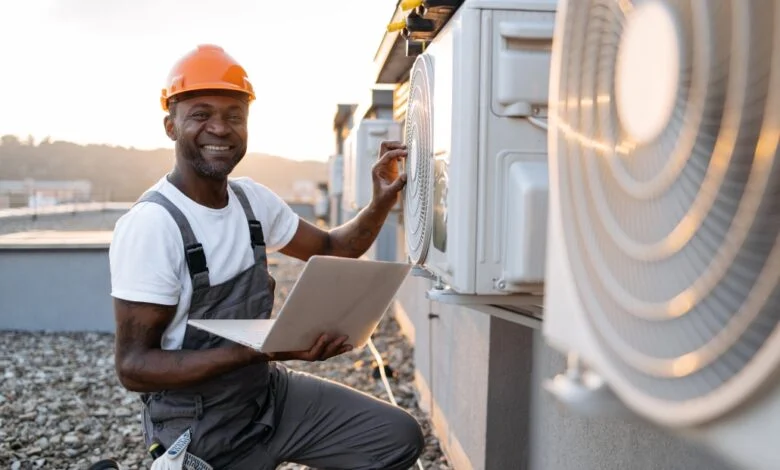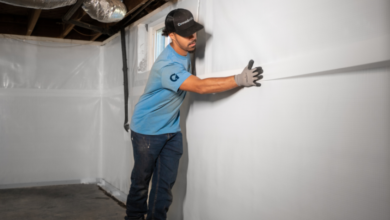The Impact of Poor HVAC Maintenance on Employee Productivity

Introduction:
In any workplace, employee productivity is a top priority. While factors like management, company culture, and workflow efficiency often take center stage, one critical element is often overlooked—HVAC preventative maintenance. A poorly maintained HVAC system can directly impact indoor comfort, air quality, and overall work performance. In this blog, we explore how neglecting HVAC upkeep can silently sabotage productivity and what businesses can do to prevent it.
1. Uncomfortable Temperatures Distract and Demotivate
When HVAC systems fail to maintain consistent indoor temperatures, it creates a physically uncomfortable environment for employees.
- Too hot? Employees become lethargic and irritable.
- Too cold? Focus and manual dexterity drop.
Even small fluctuations in temperature can reduce productivity. A study from Cornell University found that productivity dropped when office temperatures fell below 68°F, and errors increased significantly.
Solution: Regular HVAC calibration ensures optimal temperature control and a consistent indoor climate.
2. Poor Air Quality Leads to Health Issues and Absenteeism
Dusty vents, dirty filters, and inadequate ventilation can lead to poor indoor air quality, allowing allergens, bacteria, and mold to circulate. This leads to:
- Increased sick days
- Allergy flare-ups
- Headaches and fatigue
- Long-term respiratory issues
Sick Building Syndrome (SBS), caused by poor HVAC performance, can significantly impact employee well-being and attendance.
Solution: Routine air filter replacement and HVAC cleaning improve air quality and reduce health-related absences.
3. Increased Noise Disruptions
Neglected HVAC systems often develop mechanical issues that cause noise—rattling ducts, squeaky fans, or loud compressors. In open-plan offices or quiet workspaces, these sounds can be especially distracting and reduce concentration.
Solution: Regular maintenance catches mechanical wear before it turns into disruptive noise.
4. Uneven Airflow and Hot/Cold Spots
Inconsistent airflow due to blocked ducts, failing fans, or improper zoning causes some areas of the office to be overly hot or cold. This leads to:
- Employee discomfort
- Complaints and morale issues
- Inequitable work environments
Solution: Preventive maintenance ensures balanced airflow and evenly conditioned spaces.
5. Lower Morale and Increased Turnover
When employees work in uncomfortable conditions for extended periods, it reflects on their job satisfaction. They may feel undervalued or neglected, which contributes to higher turnover rates and recruitment challenges.
Solution: Maintaining a comfortable workplace shows employees their well-being is a priority, which boosts loyalty and retention.
6. Reduced Focus and Cognitive Function
Scientific studies have shown a clear link between indoor air quality and cognitive performance. Poor ventilation can increase CO2 levels, which directly impairs decision-making, focus, and creativity.
Insight: Even high-performing teams can struggle in low-quality air environments.
7. Energy Waste Hurts Operational Budgets
A poorly maintained HVAC system consumes more energy to deliver less performance. This not only inflates utility bills but can also result in inconsistent conditions that negatively affect employee output.
Solution: Energy-efficient HVAC systems, when well-maintained, support both productivity and financial sustainability.
Best Practices to Support Employee Productivity Through HVAC Care
- Schedule Preventive Maintenance: Regular check-ups and tune-ups prevent costly breakdowns and ensure optimal performance.
- Change Air Filters Frequently: Replace filters every 1–3 months depending on usage and building occupancy.
- Invest in Smart Thermostats and Zoning: Improve temperature control and cater to different space requirements.
- Monitor Indoor Air Quality: Use CO2 sensors and air quality monitors to stay ahead of invisible comfort issues.
- Educate Building Occupants: Encourage employees to report HVAC-related concerns quickly.
Conclusion:
A clean, well-maintained commercial HVAC system is more than a comfort feature—it’s a vital contributor to employee health, satisfaction, and productivity. Businesses that prioritize regular HVAC maintenance not only reduce operational costs but also create an environment where employees can do their best work.
Need help maintaining a healthy and productive workspace?
Our commercial HVAC experts are ready to assess your system and implement a tailored maintenance plan that keeps your workplace efficient, comfortable, and performance-ready.
Let me know if you’d like this converted into a newsletter, social media series, or a downloadable checklist for facilities managers.





